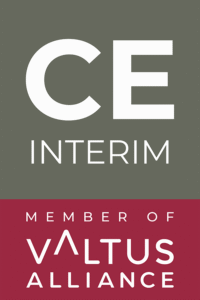Nu aveți suficient timp pentru a citi articolul integral? Ascultați rezumatul în 2 minute.
Încheierea unui proiect nu înseamnă doar să bifezi căsuțele și să-ți iei la revedere. Este vorba de a lăsa o moștenire - și de a vă asigura că munca dvs. continuă să producă rezultate chiar și după ce ați plecat.
Fie că finalizați o misiune interimară, un angajament ca freelancer sau un proiect de consultanță de mare impact, acești opt pași vă vor ajuta să predați frâiele cu încredere, claritate și profesionalism.
1. Nu plecați pur și simplu. Planificați un interogatoriu adecvat.
Nu ieșiți niciodată pe ușă fără să stați de vorbă cu factorul de decizie care v-a angajat (CEO, GM, membru al consiliului de administrație etc.). Această conversație este cea în care se face reputația și se asigură următoarele proiecte.
În timpul interogatoriului, explicați-le:
- Cum arăta situația când ați început
- Ce s-a schimbat în timpul misiunii dvs.
- Ce rezultate au fost obținute (în termeni comerciali simpli)
- Cum s-au adaptat echipa și compania la schimbările dvs.
Nu este vorba despre laudă, ci despre a vă ajuta clientul să facă legătura. Când vor vedea cum lor succesul este legat de dumneavoastră impact, este mult mai probabil să sune din nou.
2. Împărtășiți ce mai trebuie lucrat
Ați fost angajat pentru a rezolva o anumită problemă, dar majoritatea afacerilor seamănă mai mult cu niște mese șubrede decât cu niște liste de verificare ordonate. Arătați că înțelegeți imaginea de ansamblu.
Discutați:
- Domenii care necesită în continuare îmbunătățiri
- Procese sau departamente conexe care pot fi afectate
- Unde ar putea apărea riscurile viitoare
Acest lucru creează încredere și vă poziționează ca o persoană care vede dincolo de propria listă de sarcini.
3. Evidențiați persoanele potrivite
Spuneți cine a făcut diferența - nu doar pentru a mulțumi, ci și pentru a vă ajuta clientul să înțeleagă cine poate continua munca.
- Menționați membrii echipei care au dat dovadă de leadership sau adaptabilitate
- Recomandați cine ar putea fi pregătit pentru mai multe responsabilități
- Dacă este posibil, propuneți o persoană care să conducă transferul intern
În cazul în care se alătură un manager permanent, documentați ceea ce mai trebuie finalizat și unde sunt posibile îmbunătățiri. Fă-i începutul mai ușor decât ți-a fost ție.
4. Transferați-vă cunoștințele în mod corespunzător
Nimeni nu dorește să fie blocat în afara muncii dvs. pentru că ați plecat cu parole, fișiere sau context.
Asigurați-vă:
- Toată documentația este stocată în unități partajate
- Deciziile-cheie și fluxurile de lucru sunt explicate în mod clar
- Rapoartele sunt ușor de înțeles și de consultat
Fă în așa fel încât să fie cât mai ușor pentru ceilalți să continue de unde ai rămas tu. Acest lucru este esențial pentru orice listă de verificare solidă de predare-primire a proiectului.
5. Documentarea rezultatelor și a lecțiilor învățate
În timp ce proiectul vă este proaspăt în minte, înregistrați atât succesele, cât și eșecurile.
Includeți:
- Rezultate în cifre (economii de costuri, îmbunătățirea proceselor, creșterea eficienței)
- Provocările cu care v-ați confruntat și modul în care le-ați depășit
- Ce ați face diferit dacă ați începe din nou
Clienții întreabă adesea despre eșecuri în interviurile viitoare. Fiți pregătiți. Un raport bun de încheiere a proiectului include atât victorii, cât și perspective.
Exemplu:
Reducerea costurilor logistice cu 22% în 6 luni prin renegocieri cu furnizorii. Învățat: Alinierea timpurie cu achizițiile ar fi prevenit fricțiunile.
6. Planificați o vizită de control
Nu dispăreți. Propuneți un follow-up de una sau două zile, la 6-12 luni mai târziu.
Scop:
- Verificați dacă procesele sunt încă funcționale
- Oferiți feedback sau corectarea cursului
- Identificarea oportunităților de îmbunătățire sau extindere
Acest lucru arată că vă pasă de succesul lor pe termen lung. De asemenea, vă menține în centrul atenției pentru munca viitoare
7. Cereți referințe reale
Nu alergați după scrisori de recomandare prăfuite. Obțineți referințe vii.
- Întrebați dacă managerul dvs. de raportare este deschis pentru un apel de referință viitor
- Oferiți-vă să scrieți un proiect de recomandare LinkedIn pe care îl pot edita
- Păstrați-o scurtă, specifică și legată de impact
Clienții au mai multă încredere în apelurile peer-to-peer decât CV-uri îngrijite. Includeți acest lucru în planul dumneavoastră de ieșire.
Exemplu:
John a fost adus pentru a stabiliza operațiunea noastră din Europa de Est. În 90 de zile, el a reconstruit echipa locală de conducere, a îmbunătățit previziunile și a obținut o creștere a marjei de 15%. Clar, calm, eficient.
8. Rămâneți pe orbita lor
Nu trebuie să te grăbești în fiecare săptămână. Dar nu dispărea.
- Felicitați echipa cu privire la viitoarele etape importante
- Împărtășiți din când în când informații sau articole relevante
- Păstrați legătura prin LinkedIn sau e-mail
Nu încheiați doar un proiect - construiți o relație pe termen lung cu un client. Cei mai buni consultanți și lideri interimari nu sunt angajați doar o dată. Ei sunt invitați din nou.
Cuvânt final
Oricine poate finaliza un proiect. Dar să lași unul în urmă bine? Asta este ceea ce vă construiește reputația.
Urmați acești pași și veți lăsa în urma dvs. o urmă curată și încrezătoare de succes - și veți deschide ușile pentru următorul.





